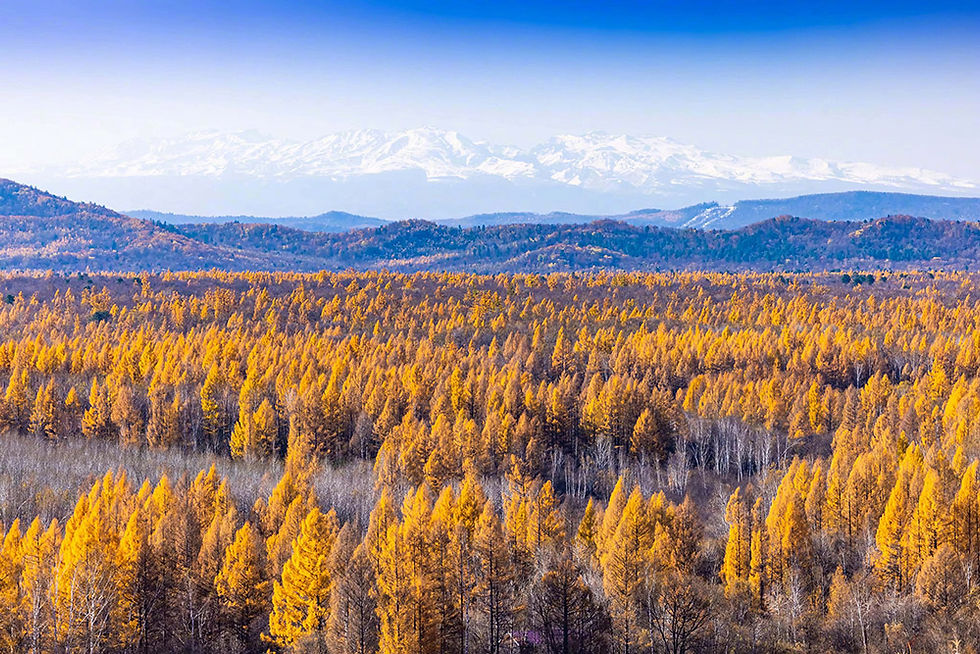Seda Travel: A Wonderland of Monks, Mountains, and Mystical Traditions
- China Vistas

- Apr 26
- 4 min read
Updated: May 6
Hidden in the quiet folds of western Sichuan, high up where clouds play tag with the mountains, lies a magical place called Seda, or Sertar. If you’ve ever dreamed of visiting a Tibetan wonderland brimming with spiritual mystery, crimson-red rooftops, rolling green hills, and deep cultural rituals, this is the perfect page in your travel journal waiting to be written.

Whether you're a curious traveler, a photography lover, or someone in search of quiet wisdom, Seda tourism offers a rare peek into the heart of Tibetan Buddhism, highland nature, and timeless tradition.
A Himalayan Hug: Where is Seda?
Seda is located in Garzê Tibetan Autonomous Prefecture, about 600 kilometers from Chengdu, tucked into the remote eastern Tibetan Plateau. At over 4,000 meters above sea level, it's a place where the air is thin, the sky is wide, and the prayers are endless.

The town itself is modest, but it’s what surrounds it that gives it soul—a surreal landscape of red-robed monks, whispering prayer flags, and a sea of tiny red houses climbing up the hillsides.
The World’s Largest Buddhist Institute: Larung Gar Five Sciences Buddhist Academy
Let’s begin with Seda’s shining star: the Larung Gar Five Sciences Buddhist Academy, more poetically known as Wuming Buddhist Institute. It is not only the largest Tibetan Buddhist academy in the world, but also one of the most visually astonishing places on earth.

Picture this: thousands of red wooden houses, home to over 10,000 monks and nuns, stacked across the hills in perfect, chaotic harmony. The sight is so dramatic it feels like a dream, especially at dawn or dusk, when the light turns the valley gold and the sound of chanting flows like wind through a forest.
Visitors can climb the slopes around the academy for panoramic views or join the faithful in quiet observation inside the great prayer halls. Though photography is limited in sacred spaces, the visual feast outside is more than enough to fill your lens—and your heart.
A Place of Final Rest: The Sky Burial Platform
In Seda, the most solemn and mysterious tradition is the sky burial, a Tibetan funeral practice rooted in Buddhist beliefs about impermanence and the cycle of rebirth.
At the Sky Burial Platform, located on a hillside not far from the main monastery complex, one can (respectfully and from a distance) witness this ancient rite. Bodies of the deceased are offered to vultures, a spiritual gesture of generosity and detachment.

While this may seem unusual or even difficult for some visitors, many find it deeply moving—a powerful reflection of life, death, and the interconnection of all beings.
Please be mindful: photography and close observation are strictly prohibited. It is a space for reverence, not spectacle.
Soft Winds and Sacred Peaks: Seda’s Highland Scenery
Seda isn’t only about monasteries and monks. The natural environment here is raw, open, and incredibly beautiful.
Fields dotted with yaks, winding mountain roads, prayer flags fluttering from ridgelines, and distant snowcaps greet you in every direction. In summer, wildflowers blanket the grasslands, while autumn brings golden light and crisp blue skies.
Travelers often fall in love with the Plateau sunrise, best viewed from the hilltops around Larung Gar, where the first sunrays light up the ocean of red houses in a golden glow. At night, the stars seem to lean in close, whispering ancient stories above your head.
More Places to See in and Around Seda
If you’re in the area for a few days, there’s more to explore beyond the main monastery:
Dolma Lhakang Monastery
A quieter temple nestled among hills, often overlooked by tourists. It’s a good place to enjoy the chanting and light butter lamps without large crowds.

Nuns’ Section of Larung Gar
A visit to the nuns' quarters, on the opposite hillside of the monks, offers a different rhythm and equally beautiful views. Female practitioners here engage in intense study and meditation.
Chokor Monastery
Located about an hour outside the main town, this smaller monastery gives you a glimpse of traditional Tibetan village life and its strong spiritual roots.
Prayer Flag Hills
The hills surrounding Seda are dotted with colorful prayer flag forests, where the wind carries blessings far and wide. Hiking here feels like walking through a sky full of hope.

Travel Tips for Visiting Seda
Altitude: At over 4,000 meters, altitude sickness is real. Travel slowly and hydrate often.
Permits: Foreign visitors usually need a special travel permit. It’s best to go with a registered tour group or agency familiar with Tibetan areas.
Connectivity: Internet can be limited. Embrace the digital detox.
Seasons: Summer (June to September) is ideal, with clear skies and blooming grasslands. Winter is beautiful but extremely cold and sometimes inaccessible due to snow.
The Spiritual Side of Your Suitcase
Seda isn’t a place for fast selfies or loud crowds. It’s a place to sit, breathe, and listen. Whether you're marveling at the sea of red rooftops at Larung Gar, walking through fluttering prayer flags on a misty morning, or simply watching the stars from your guesthouse window, every moment in Seda feels like it’s wrapped in a little magic.
Contact us today to craft your dream China adventure!




Comments